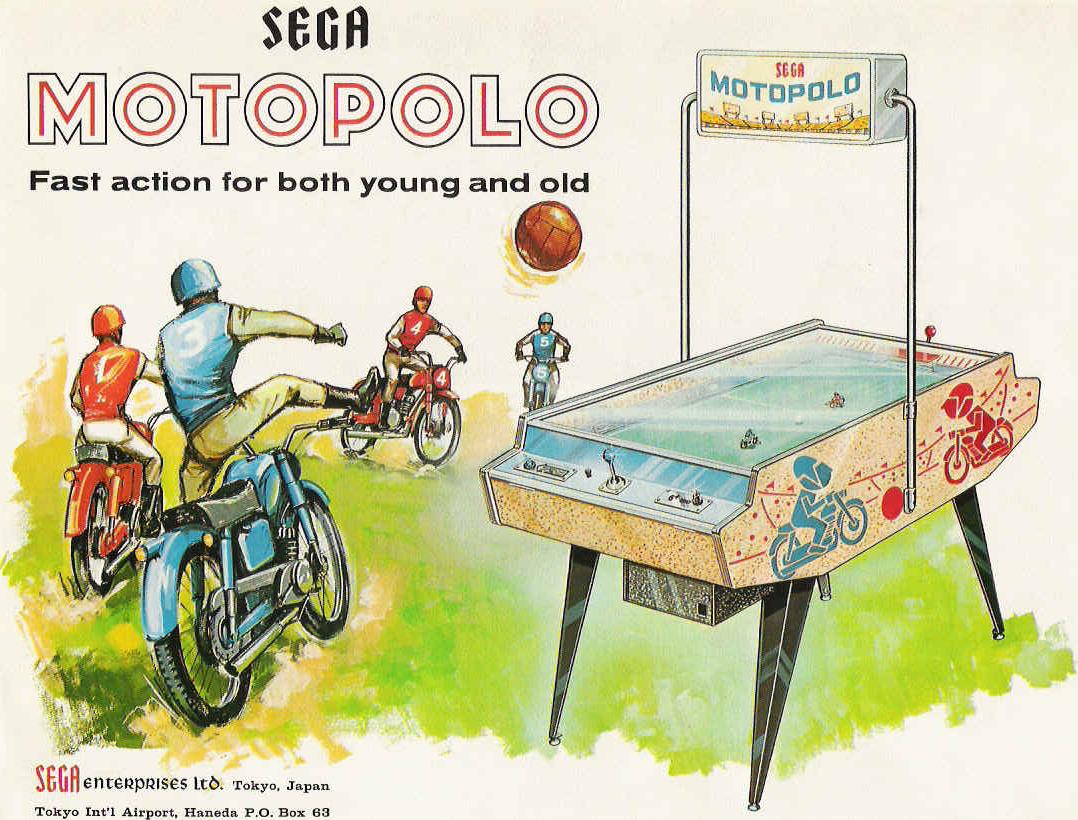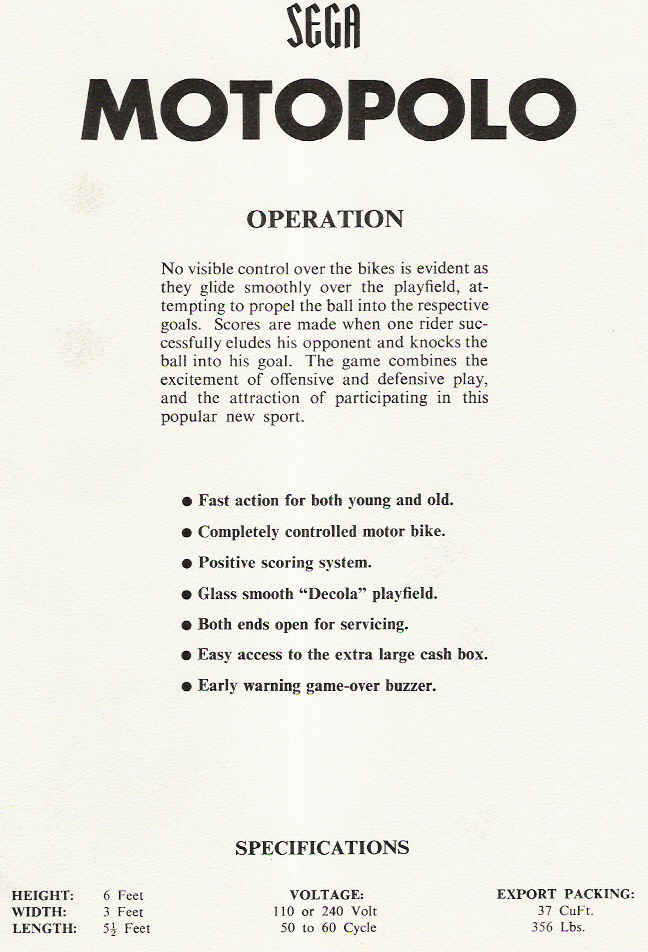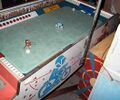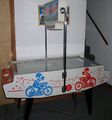Difference between revisions of "MotoPolo"
From Sega Retro
| Line 17: | Line 17: | ||
''{{PAGENAME}}'' was priced at ¥180,000 with the background sound unit,{{fileref|SEGA Price List 1972-09-01 JP.pdf|page=6}} or ¥150,000 without it.{{fileref|1977SegaPriceList JP.pdf|page=7}} The background music system included electronic sound and an 8-track player. The sound unit could be purchased separately for an unknown price.{{fileref|1977SegaPriceList JP.pdf|page=7}} | ''{{PAGENAME}}'' was priced at ¥180,000 with the background sound unit,{{fileref|SEGA Price List 1972-09-01 JP.pdf|page=6}} or ¥150,000 without it.{{fileref|1977SegaPriceList JP.pdf|page=7}} The background music system included electronic sound and an 8-track player. The sound unit could be purchased separately for an unknown price.{{fileref|1977SegaPriceList JP.pdf|page=7}} | ||
| − | ''MotoPolo'' was one of the first [[wikipedia:Air hockey|air hockey]] style games, predating air hockey games such as Brunswick's ''Air Hockey'' (1972) and Sega's ''[[Speed Hockey]]'' (1973) as well as paddle video games such as the Magnavox Odyssey's ''Tennis'' (1972) and Atari's ''Pong'' (1972). ''MotoPolo'' was also the first arcade game with a [[wikipedia:Joystick|joystick]], predating Sega's ''[[Missile]]'' (1969). In addition, ''{{PAGENAME}}'' was the first electronic game to playback | + | ''MotoPolo'' was one of the first [[wikipedia:Air hockey|air hockey]] style games, predating air hockey games such as Brunswick's ''Air Hockey'' (1972) and Sega's ''[[Speed Hockey]]'' (1973) as well as paddle video games such as the Magnavox Odyssey's ''Tennis'' (1972) and Atari's ''Pong'' (1972). ''MotoPolo'' was also the first arcade game with a [[wikipedia:Joystick|joystick]], predating Sega's ''[[Missile]]'' (1969). In addition, ''{{PAGENAME}}'' was the first electronic game to playback recorded sounds from an 8-track player, which Sega later used to playback music in ''[[Jumbo]]'' (1969) and ''[[Sand Buggy]]'' (1972). |
==Gameplay== | ==Gameplay== | ||
Revision as of 14:43, 26 November 2024
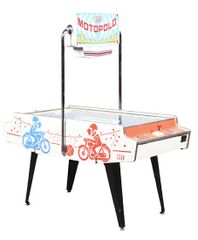
| |||||||||||||
| MotoPolo | |||||||||||||
|---|---|---|---|---|---|---|---|---|---|---|---|---|---|
| System(s): Electro-mechanical arcade | |||||||||||||
| Publisher: Sega Enterprises, Ltd. | |||||||||||||
| Developer: Sega Enterprises, Ltd. | |||||||||||||
| Genre: Sports | |||||||||||||
| Number of players: 2 | |||||||||||||
|
This teeny-tiny article needs some work. You can help us by expanding it.
MotoPolo is a 1968 electro-mechanical arcade sports game by Sega Enterprises, Ltd. Based on the sport of motoball, each player controls a small foam motorcycle over a smooth glass "Decola" playfield as they push around a ping pong ball trying to score on the other's goal. The machine has an 8-track player which makes motorcycle noises and a buzzer for early warning of game over.
MotoPolo was priced at ¥180,000 with the background sound unit,[1] or ¥150,000 without it.[2] The background music system included electronic sound and an 8-track player. The sound unit could be purchased separately for an unknown price.[2]
MotoPolo was one of the first air hockey style games, predating air hockey games such as Brunswick's Air Hockey (1972) and Sega's Speed Hockey (1973) as well as paddle video games such as the Magnavox Odyssey's Tennis (1972) and Atari's Pong (1972). MotoPolo was also the first arcade game with a joystick, predating Sega's Missile (1969). In addition, MotoPolo was the first electronic game to playback recorded sounds from an 8-track player, which Sega later used to playback music in Jumbo (1969) and Sand Buggy (1972).
Contents
Gameplay
Specifications
Dimensions[6]
Promotional material
Photo gallery
References
- ↑ 1.0 1.1 File:SEGA Price List 1972-09-01 JP.pdf, page 6
- ↑ 2.0 2.1 2.2 1977 Sega Price List, page 7
- ↑ https://thetastates.com/eremeka/eremekaDisplay.php?search=yes&nameSearch=Motopolo&yearLow=&yearHigh=&tag=&company=Sega
- ↑ File:CashBox US 1970-11-21.pdf, page 57
- ↑ File:CashBox US 1968-04-13.pdf, page 77
- ↑ Billboard, "April 20, 1968" (US; 1968-04-20), page 45


